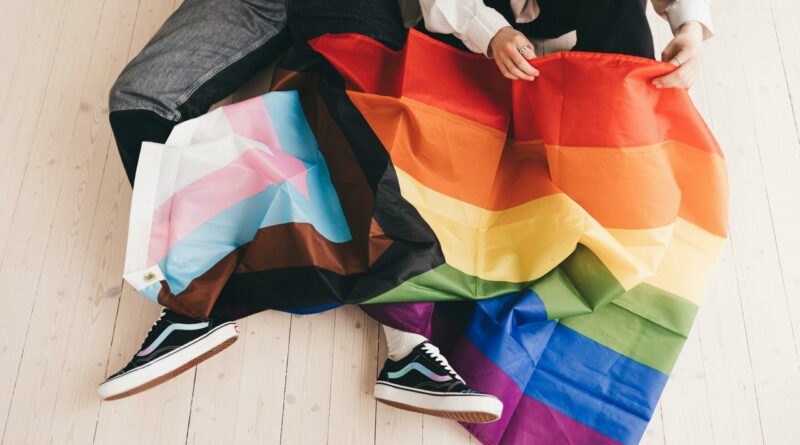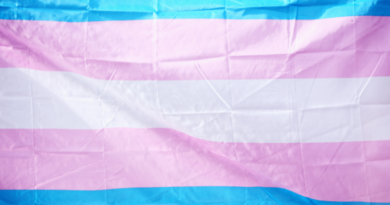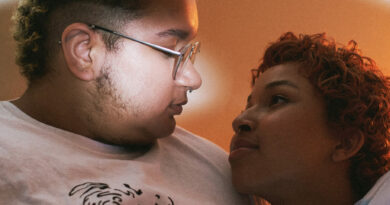I’m trans+ — so what about my sexual orientation?
Our committee of trans+ young people share their journeys of figuring out their sexual orientation alongside their gender identity
Despite being thrown into the same acronym LGBTQ+, gender identity and sexual orientation are two different parts of someone’s identity.
That said, they certainly relate to each other. We generally define a person’s sexual orientation through their gender and the gender of the people they’re attracted to.
So what happens when we start to figure out we’re trans+? As well as gender questions, this can throw up a lot of sexual orientation questions too! This is really common, and there’s no right or wrong way to work this identity stuff out.
To give some insight into the many different experiences, we asked our committee of trans+ young people about their thoughts and journey figuring out their sexual orientation.
Ajax (they/he)
For me, figuring out my gender identity and my sexuality has been a side-by-side journey. Something along the lines of Sisyphus pushing his boulder up the hill.
When I was 11, I decided that I must be bi, after being asked by my first girlfriend if I knew what being bisexual was and if I was bisexual.
I tried coming out to my friends, and one of them began to harass me over it. They identified as pansexual at the time and pushed the opinion that pansexual was more ‘appropriate’. (The bi/pan ‘debate’ unfortunately still lives on!) Although, thanks to them, I learned about pansexuality and began considering myself between bi and pan to see where I ‘fit’.
Then I began exploring my gender, and that threw a lot of things up in the air for me.
I realised that certain feelings I had were dysphoria, and that being neither a girl nor a boy challenged my understanding of who I was attracted to. It was a lot.
And then, a couple of years later, I realised that I identify as asexual (ace).
Learning I’m ace made a lot of things make sense suddenly. I was struggling to figure out who I wanted to ‘do it with’ when it turns out that the answer is “no one”! I now comfortably identify as panromantic and asexual, and I couldn’t be happier (even if it did take me a while to get here).
Morgan (they/them)
Personally my sexuality always came a lot easier than my gender identity. That said, being trans and being definitive about my sexuality was more of a struggle.
I had identified as bisexual since the age of 12. But, as I came out as non-binary, I became aware of other sexualities, such as pansexuality (attraction regardless of gender), omnisexual (attracted to all genders but gender plays a role in attraction), polysexual (attraction to multiple but not necessarily all genders), and more.
Whilst being incredibly positive terms for the community, this did bring some confusion for me with my newly found trans identity.
I struggled with this. I was just attracted to whoever I felt attracted to, often resulting in different kinds of attraction for different people. It became quite personally confusing (which I’m sure others can relate to).
Finally, I have come to terms with my sexuality in relation to my gender identity. I realised that, especially being polyamorous (romantic and/or sexual relationships with multiple consensual partners), who I am attracted to doesn’t necessarily matter to me (in line with my hippie self!).
Now I generally go by pansexual, as this comfortably fits with how I feel attraction.
Charlie (he/him)
For me, figuring out my sexuality has been very difficult. Just before I came out as trans, I thought I was a lesbian. I don’t know why but I did.
Once I figured out I was trans, I thought I liked boys and identified as gay for many years. After starting testosterone, I have become more comfortable with myself. This pushed me to properly think about how I feel, which led me to thinking about bisexuality.
And although this label fits me, it still felt wrong.
I reflected upon my life: how I had never had a ‘crush’ on anyone, or even pursued romantic relationships, and didn’t find anyone ‘sexually attractive’. This made me feel alone and isolated from my peers, who always seemed to like someone or be with someone. I felt wrong and invalid because I still liked sex but didn’t find anyone attractive, so I didn’t seek out romantic relationships.
But here, I considered the A spectrum of aro and ace identities (aromantic and asexual identities). Recently I had the courage to actually face those feelings. I know now that I am AroAce and still bisexual.

Anna (they/them)
I never felt that similar to my peers when it came to ‘crushes’ or interest in dating. I first identified as asexual and on the aromantic spectrum, due to my relative infrequency of wanting to date someone, regardless of gender.
Once I was in university, I started to have more occasional feelings for girls and some non-binary people. But it didn’t feel the same as how my friends described their feelings of attraction.
From the perspective of my assigned gender, I didn’t really relate to being a lesbian. The Instagram posts about women loving women, or dreaming about being someone’s girlfriend or wife didn’t fit with my experience.
Once I realised I was non-binary, I felt more comfortable acknowledging my sexuality from the perspective of someone who is trans/non-binary, rather than from the perspective of my assigned gender.
I later reflected more on people being non-binary lesbians. This really resonated with me, due to the pressures from my assigned gender to date, particularly to be in long-term relationships with men.
I still relate a lot to other asexual people and how they experience relationships and dating. But also, in being in relationships that are not heterosexual, I connect a lot with the experiences of other trans and non-binary lesbians.
Carlo (he/him)
When it came to figuring out my sexuality, it was around the same time I started to really question my gender. I figured that it’s normal to like boys, that makes me straight and that’s cool!
And then came the gender questions.
I tried to experiment, to see if I could like girls in the ways I saw other boys liking girls. But I just couldn’t bring myself to stay grounded in crushes that really had nothing to do with love.
I find it funny now, that back before I’d even begun to fully delve into the transgender rabbit hole, everybody around me assumed I was lesbian. It’s true that I fluctuated a bit, but I can say for sure that I never lost a love of boys.
Coming out as trans was a struggle when it came to finding my sexuality. I felt well and truly lost on the whole thing. My friends were mostly lesbian, and I didn’t know any other gay boys or enbys.
What really helped me was finding a celebrity I could relate to, who had similar experiences of trying to fit in, failing, then embracing themselves fully: Elton John.
His story – from dating a woman, in a relationship he felt trapped in, to slowly delving from bisexuality, to being openly gay – struck me as someone I could see myself in. It really helped me to accept that I was gay. Liking boys didn’t change who I was as a person, or make me any less of a man.
This was just who I loved and, as much as it was a struggle to journey to that conclusion, it was worth every second for the reward of being happy.
Labels don’t have to be permanent
Everyone will have a different experience of working out their identity. Rather than a straight line from start to finish, it can often feel like more of a squiggly one, sometimes circling back on itself.
Circling back is okay, and questioning how you feel and identify is very healthy. Labels don’t have to be permanent and only you get to decide how you feel about and express your identity.
Take your time and, as Carlo (he/him) says above, it’s “worth every second for the reward of being happy”.
This article is part of our “Am I Trans?” Translating Sex, Identity & Relationships content series: supporting trans+ young people to access sex and relationships education that is relevant to their experiences and needs. Discover the full series here.
We use the term trans+ in our articles as an umbrella term intended to incorporate all transgender, non-binary, agender and genderfluid identities.
Some of the content addresses potentially triggering topics, such as transphobia and gender dysphoria. We’ve added specific content warnings to these pieces, but please take a moment to check in with yourself and how you’re feeling before diving into the series.
Other support
- Discover the full series
- Support & resources for trans+ young people
- Switchboard helpline – for anyone, anywhere in the country, at any point in their journey to discuss anything related to sexuality and gender identity
- Gendered Intelligence – Knowledge is Power resource for young trans+ people
Read more
Last Reviewed 22 April 2024
Image Credit: Lisett Kruus via Pexels





